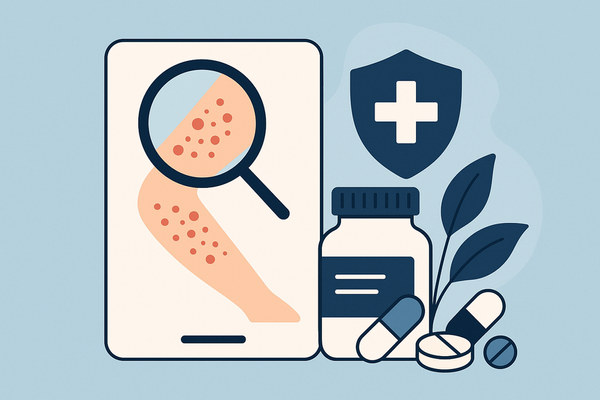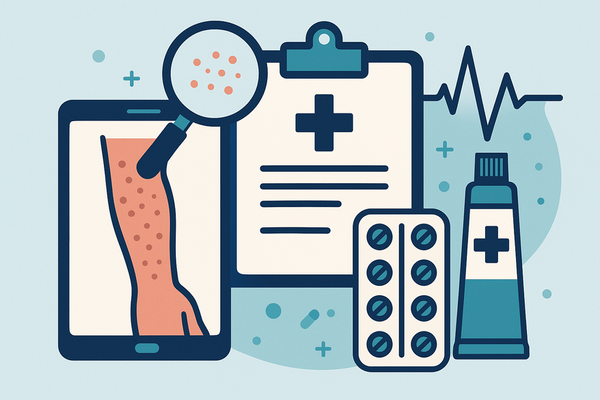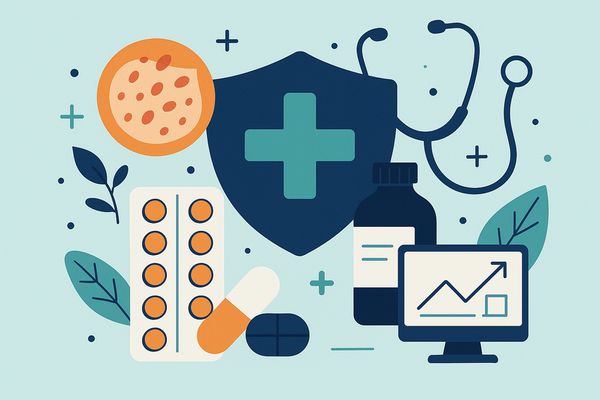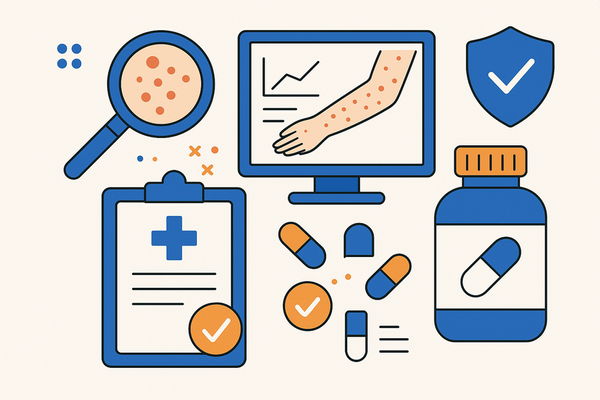Rash Detector Mobile App Review: Comparing Web and Mobile Diagnosis Platforms
Explore the pros and cons of rash detector mobile apps versus web platforms for accurate diagnosis. Our review covers usability, accuracy, and privacy concerns.
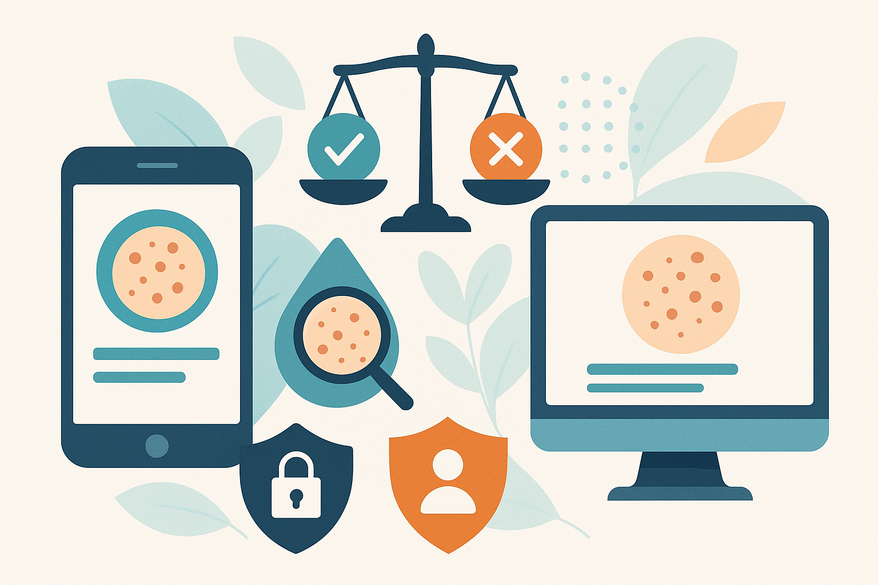
Estimated reading time: 8 minutes
Key Takeaways
- Mobile apps offer quick, private checks with on-device processing.
- Web platforms provide detailed analytics and clinician-friendly reports.
- Accuracy varies; these tools support but do not replace professional diagnosis.
- Data privacy differs: on-device storage vs. cloud-based services.
- Choose based on convenience, reporting needs, and privacy preferences.
Table of Contents
- Introduction
- Section I: Overview of Rash Detection Apps
- Section II: Detailed Review of Mobile Rash Detection Apps
- Section III: Exploration of Web-Based Rash Diagnosis Platforms
- Section IV: Comparative Analysis
- Section V: Final Recommendations and Conclusion
- Section VI: Additional Considerations
- FAQ
Introduction
Rash detection mobile app review delves into the world of AI-driven skin analysis tools that empower users to identify and track rashes straight from their smartphones. This article contrasts mobile and web solutions, examining usability, accuracy, privacy, and diagnostic capabilities.
Section I: Overview of Rash Detection Apps
Rash detection apps use machine learning to:
- Upload or photograph skin rashes.
- Analyze images for potential diagnoses.
- Provide instant feedback and track symptom progression.
They serve as a first line of defense, guiding users on when to seek medical attention. For an in-depth comparison of top photo rash diagnosis tools, visit our partner site.
Key definitions and stats:
- Apple’s Rash ID description highlights AI-driven skin checks and local image analysis.
- Google Play’s Rash Detector overview shows user ratings over 4.0 and cloud suggestions.
Section II: Detailed Review of Mobile Rash Detection Apps
We analyzed top mobile apps like Rash ID and Rash Detector on features, usability, accuracy, and user feedback.
During our review, the Rash Detector app delivered rapid on-device analysis, offering users an instant diagnostic report.
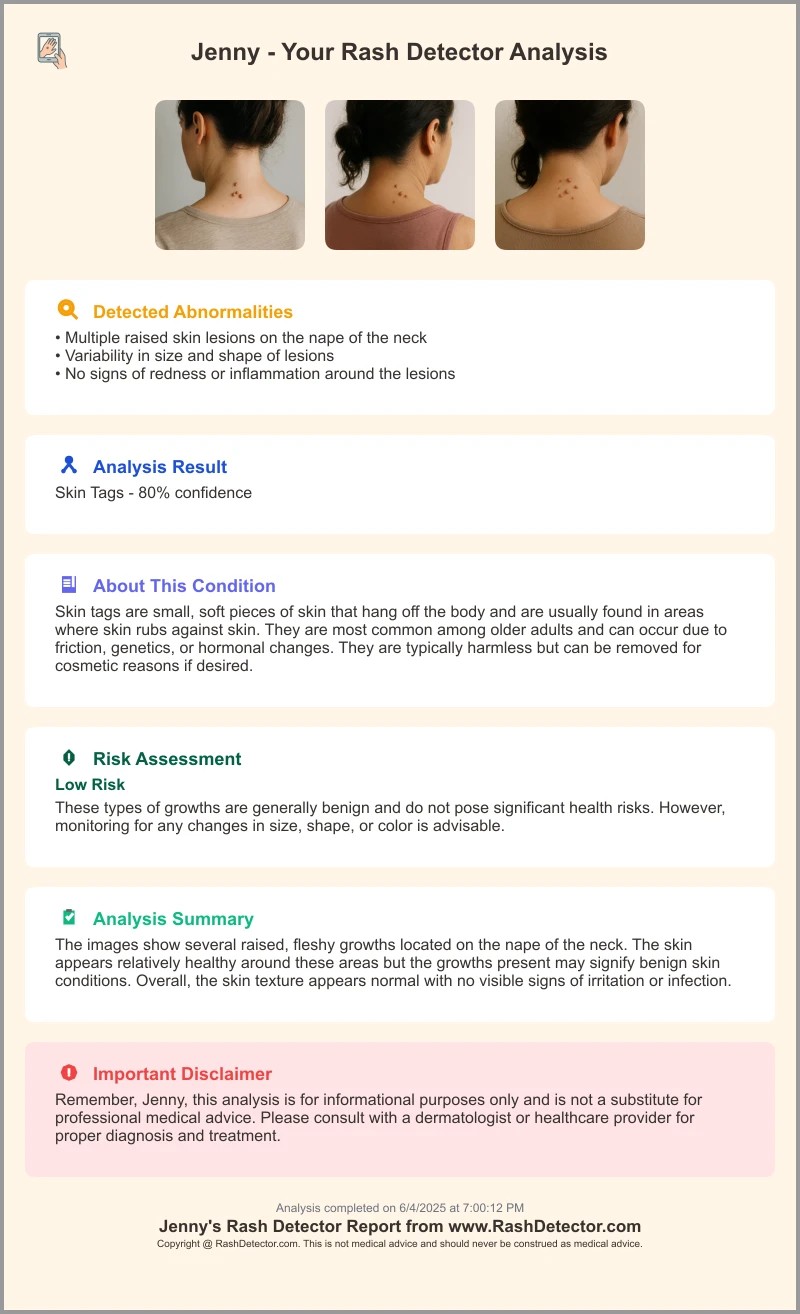
Features
- AI-driven photo analysis for common rashes.
- Symptom questionnaires and interactive chatbots.
- Secure local (on-device) data processing to protect privacy.
- History logs for follow-up with clinicians and personal records.
Usability
- One-tap photo capture with guided input screens for non-experts. Improve photo quality with tips from our photo guide.
- Offline capability lets users scan without internet and sync later.
- Simple touch-driven interface, clear prompts, and tutorial overlays.
Accuracy Metrics
- Controlled studies show sensitivity of 92% and specificity of 95.5%.
- Documented cases of serious misclassification highlight caution.
User Feedback Summary
Positive:
- Instant feedback and educational tips.
- Discreet usage in private settings.
- Helpful symptom tracker and reminders.
Negative:
- Occasional false negatives or false positives.
- Cannot replace professional diagnosis.
- UI issues on older devices.
“One study sent pictures of malignant melanomas through an app, and found the device described 88 percent of them as ‘medium-risk.’ It wrongly advised users to simply monitor the lesions.”
Advantages vs Drawbacks
- Advantages: Portability, on-device privacy, ongoing tracking.
- Drawbacks: Variable accuracy, false reassurance, camera quality limits.
Section III: Exploration of Web-Based Rash Diagnosis Platforms
Web platforms process images and data in the cloud, accessible via any browser.
Operational Differences
- Server-side processing vs. on-device AI.
- Continuous internet connection required.
- No installation needed—usable on desktops, tablets, and phones.
Benefits
- Familiar interfaces and larger screens for clinicians.
- Downloadable PDF reports integrate into medical records.
- Ideal for intermittent users who avoid app downloads.
Limitations
- Heightened privacy concerns; see our article on data security.
- Dependent on connection speed; slower than local processing.
- No offline functionality for remote areas.
Section IV: Comparative Analysis – Web vs Mobile Rash Diagnosis
We compare key factors:
- Accessibility: Mobile offers offline scans; web needs internet.
- Speed: Mobile provides instant on-device results; web depends on upload/download times.
- User Interface: Mobile is touch-optimized; web supports drag-and-drop on larger displays.
- Reliability & Accuracy: Mobile accuracy varies; web may leverage more powerful cloud AI.
- Data Privacy & Security: Mobile minimizes data transmission; web requires strong encryption for cloud storage.
- Diagnostic Capabilities: Mobile excels at quick spot checks; web delivers robust analytics and detailed reports.
Scenario Examples:
- Travel or field work → Mobile preferred for offline, quick checks.
- Clinical setting or telehealth follow-up → Web preferred for detailed reports and sharing.
Section V: Final Recommendations and Conclusion
Key findings:
- Mobile apps excel at convenience, privacy, and symptom tracking.
- Web platforms excel at detailed analysis, reporting, and clinician collaboration.
Recommendations:
- If you need instant, private checks and symptom logs, choose a mobile app like Rash Detector.
- If you require comprehensive reports, cross-device access, or clinician sharing, opt for a web platform.
These tools support—but do not replace—professional medical advice. Consult a healthcare provider if symptoms worsen or you’re uncertain.
Section VI: Additional Considerations
Privacy & Data Security
- Mobile apps can process on-device, minimizing data transmission.
- Web services must implement end-to-end encryption and clear data retention policies.
Future Trends
- Advancements in AI accuracy promise improved standardized imaging and algorithms.
- Integration with electronic health records (EHRs) for seamless clinical workflows.
- Enhanced user education modules within apps and platforms.
FAQ
- What is the best rash detection app?
- There’s no one-size-fits-all solution. Mobile apps like Rash Detector offer privacy and instant results, while web platforms provide detailed reports.
- Are these tools accurate?
- Accuracy varies. Controlled studies report over 90% sensitivity, but real-world performance depends on image quality and algorithm updates.
- Is my data safe?
- Mobile apps can store images locally, reducing exposure. Web services should use end-to-end encryption and clear retention policies.
- Can these apps replace a dermatologist?
- No. They are decision-support tools designed to supplement—but not replace—professional medical advice.


